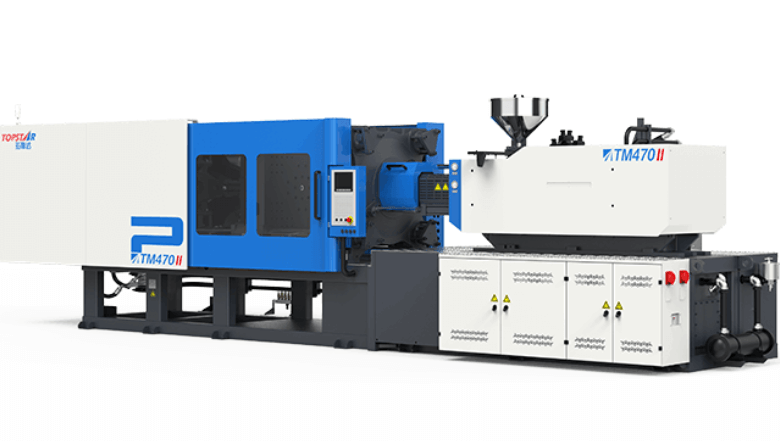How long is the replacement interval of hydraulic oil of injection molding machine?

Proper hydraulic fluid maintenance is crucial to the reliable operation of an injection molding machine, particularly for hydraulic injection molding machines, where high pressures and temperatures exert tremendous stress on fluid properties. Determining the change interval for hydraulic fluid in an injection molding machine requires balancing equipment uptime with optimal fluid performance, contamination control, and component life. In this introduction, we will outline the importance of regular oil changes—maintaining pump efficiency, preventing system wear, and ensuring consistent injection quality—and outline seven key factors that influence ideal hydraulic fluid maintenance intervals for injection molding machines.
Hydraulic Fluid Viscosity Degradation for Injection Molding Machine
Over time, the base oil and additive package in an injection molding machine system deteriorates due to the effects of heat, pressure, and shear. Viscosity degradation alters flow characteristics, leading to reduced actuator speeds and compromised pressure stability. In a typical injection molding machine, the oil operates at 140-160°F in the circuit and peaks at over 200°F at the relief valve. Under these conditions, the viscosity of the oil can degrade by up to 10% over 2,000 hours of machine operation if no changes are made. Therefore, many manufacturers recommend sampling and testing hydraulic fluid every 500 hours of operation, measuring viscosity at both 40°C and 100°C, and replacing the fluid if the viscosity exceeds the ISO VG grade specifications. By closely monitoring viscosity loss, operators can proactively schedule oil changes before performance degrades.
Contamination Control and Oil Change Schedule for Injection Molding Machine
Particulate and water contamination pose a significant risk to the injection molding machine, accelerating component wear and inducing valve sticking or pump cavitation. Studies have shown that even 10 ppm of water in hydraulic fluid can reduce filter life by 50% and double the wear rate of servo pump vanes. Hence, a rigorous oil sampling program—using ISO 4406 particle count and water content testing. If the particulate counts exceed ISO code 19/17/14 or the water content exceeds 200 ppm, you should change the oil immediately, regardless of operating hours. For most injection molding machines, operators check filters every 250 hours and every 2,000 to 4,000 machine hours, or every 12 hours. They also thoroughly flush the system with new oil every 1,500 machine hours. By tying oil change intervals to contamination indicators, plants can minimize unplanned downtime and extend the life of critical hydraulic components.
Effects of Thermal Stability and Oxidation on Oil Change Intervals
Heat accelerates oxidation, forming acids and sludge that degrade the performance of hydraulic fluids in injection molding machines. Certified oxidation stability tests help predict the expected life of oils. In systems where average oil temperatures exceed 150°F for extended periods, oxidation byproducts accumulate quickly, necessitating oil changes every 1,500 machine hours or sooner if RPVOT values drop below 150 minutes. Conversely, a well-designed cooling circuit operating at temperatures below 120°F can extend intervals to 3,000 hours. Hours. In both cases, adhering to the recommended hydraulic oil change intervals based on the thermal curve prevents polymerization on valve cores and fouling of heat exchangers, maintaining consistent heat transfer and mold temperature control for hydraulic injection molding machines.
Additive Consumption and Oil Reconditioning Practices
Hydraulic oils contain a combination of additives—antiwear agents, corrosion inhibitors, and demulsifiers—that are consumed over time in the injection molding machine circuit. Additive consumption testing measures antiwear performance through four-ball wear test results, indicating when reconditioning or replacement is necessary. For example, if the wear scar diameter exceeds the baseline value by 20%, it suggests that the antiwear additives have reached their expiration date. Some advanced plants utilize oil purification systems—such as vacuum dehydration and microfiltration—to extend the change interval from 2,000 hours to 5,000 hours by removing water and particulate matter while retaining additives, thereby extending the life of the oil. However, after completing two purification cycles, a complete oil change is recommended to reset additive levels and maintain the reliability of the hydraulic injection molding machine.
See also How to Leverage Instagram Reels Monetization with the Help of an AI Video Generator App
Manufacturer Guidelines and Custom Change Schedules
Although the industry average recommends that injection molding machine hydraulic oil be reconditioned every 2,000 to 4,000 hours, the actual recommendation may vary depending on the specific machine and its operating conditions. The type of pump, reservoir capacity, and operating duty cycle often determine oil change intervals. For example, a servo-driven hydraulic injection molding machine with high-frequency cycling may require oil changes every 1,000 hours. In contrast, a standard hydraulic press operating under moderate conditions may need oil changes every 5,000 hours. Maintenance teams must consult OEM manuals and incorporate oil analysis data (including viscosity, contamination, and oxidation) into a customized maintenance schedule. By combining supplier recommendations with internal performance monitoring, plants can ensure that injection molding machines are always using fresh, high-quality hydraulic oil customized to their unique production needs.
Best Practices for Hydraulic Oil Changes for Injection Molding Machines
Determining the ideal change interval for hydraulic oil in an injection molding machine depends on several factors, including viscosity stability, contamination levels, oxidation rates, additive consumption, and OEM guidelines. Typically, the baseline service life of most hydraulic injection molding machines is 2,000 to 4,000 machine hours or approximately 12 months. However, advanced practices can extend this service life to 5,000 hours or more.





